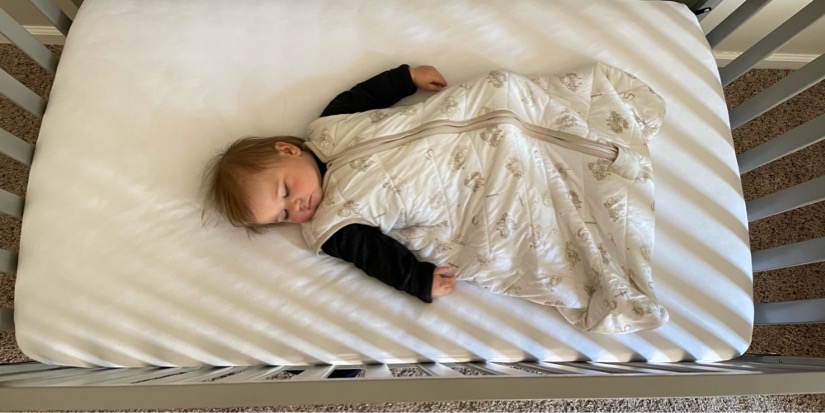Tips for Safe Sleep for Babies
- Category: Women & Children
- Posted On:

Sleep.
It’s a big topic for the parents of new babies, and one that can bring anxiety with each new evening. In addition to questioning when, if, and how your baby will sleep, it’s also important to consider sleep safety. There are a few important things to remember when putting your baby to sleep:
- ALONE. Your baby should sleep alone in a crib or bassinet. The AAP recommends room sharing until your baby is at least six months old, meaning the crib or bassinet is near enough to you that you can hear baby as they sleep. Remove any stuffed animals, blankets, bumpers, or pillows. Bed sharing puts babies at risk of suffocation, strangulation, and sudden infant death syndrome (SIDS). Studies have shown that bed sharing is the most common cause of death in babies three months and younger.
- ON THEIR BACK. You should lay your baby down to sleep on their back. After three or four months, the baby may roll over in their sleep, but always start them on their back at nap and at bedtime.
- IN A CRIB. Baby should sleep on a firm, flat surface in a crib or bassinet. Do not prop baby up on an incline or use wedges or devices marketed for SIDS prevention. Baby should never sleep in bed with an adult, sibling, or pet.
- IN YOUR ROOM. Keep baby in your room and close to your bed, but on a separate surface designed for infants. Ideally baby will stay in your room for the first year, but at least the first six months.
- NO SMOKING. Babies are at a higher risk of SIDS if their caregivers or others in their home smoke. Keep a smoke-free environment for your baby’s health. Remember that smokers carry secondhand smoke on their clothing and skin, which poses risks to your baby even if they smoked at a different location. Ask visitors to wash their hands before touching your baby, and request they not smoke before visiting.
- BREASTFEEDING is associated with a reduced risk of SIDS. The AAP recommends exclusive breastfeeding for the first six months, if possible. (But remember—fed is best. If you are struggling with breastfeeding, our lactation consultants can help! Call 540.741.4465 or click here to schedule a consultation with one of our certified lactation consultant nurses. Consultations are covered by most insurances.)
- PACIFIERS reduce the risk of SIDS for all babies. Think about giving your baby a pacifier for naps and nighttime sleep to reduce the risk of SIDS. Do not attach the pacifier to anything like a string, clothing, stuffed toy, or blanket that carries the risk for suffocation. Wait until breastfeeding is well established (usually around 3-4 weeks) before offering a pacifier.
- STAY COOL. Do not let your baby get too hot during sleep. Dress your baby in sleep clothing, such as a wearable blanket, designed to keep him or her warm without the need for loose blankets in the sleep area. Do not over bundle – keep baby’s face and head uncovered during sleep. Research links an increase in SIDS risk with too many layers of clothing and high room temperature.
- STAY UP TO DATE ON VACCINES. Follow your healthcare provider’s guidance on your baby’s vaccines and regular health checkups.
- NO BREATHING MONITORS NECESSARY. Do not use heart or breathing monitors in the home to reduce the risk of SIDS.
Mary Washington Hospital has been recognized as a Safe Sleep Leader by the National Safe Sleep Hospital Certification program since 2019 and is dedicated to the safe sleep of all babies in the community we serve. Our team educates new parents on the best practices for safe sleep, so that everyone can rest easier. For more education on safe sleep practices, visit www.cribsforkids.org.



